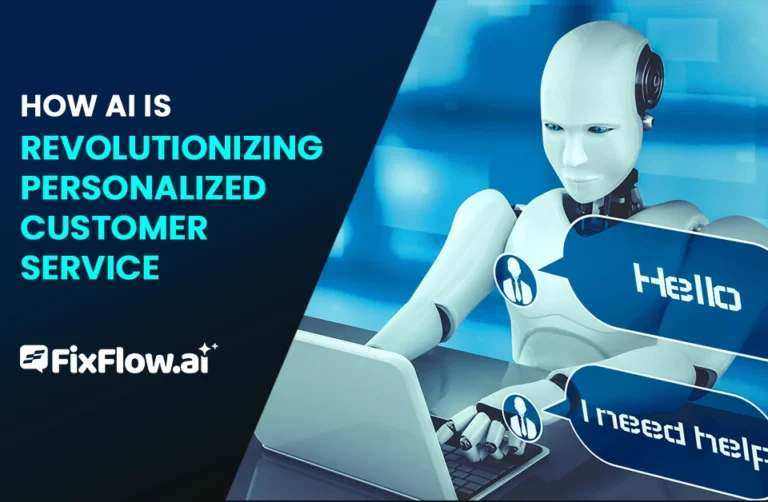Is Your AI Investment Paying Off? Measuring Customer Engagement ROI
Measuring AI’s ROI requires looking beyond traditional financial metrics. While cost savings and revenue gains matter, you’ll need to track customer engagement indicators like NPS, CSAT, personalization effectiveness, and meaningful interactions. Combine quantitative measures (conversion rates, ticket deflection) with qualitative insights (sentiment, feedback) to build a custom evaluation framework aligned with your strategic objectives. The true value of your AI investment emerges when you connect these dots to reveal the complete customer impact story.
Traditional ROI Metrics vs. Customer Engagement Indicators
Most traditional ROI calculations focus primarily on financial outcomes, revenue gains minus implementation costs. While this approach works for many business investments, AI-powered customer engagement requires a more nuanced evaluation framework.
When measuring ai roi customer engagement, you’ll need to balance quantitative metrics (cost savings, conversion rates) with qualitative indicators that reflect relationship strength. Customer engagement metrics like session duration, repeat interactions, and sentiment analysis provide deeper insight into how AI affects the customer journey beyond immediate financial returns.
The key difference? Traditional ROI is transaction-focused, while engagement ROI captures the ongoing value exchange between your brand and customers. By tracking both dimensions, you’ll develop an exhaustive picture of how AI investments transform not just your bottom line but your entire customer experience ecosystem.
Quantifying AI’s Impact on Customer Satisfaction and Loyalty
While financial metrics provide clear ROI indicators, customer satisfaction and loyalty represent the emotional capital that drives long-term business success. Your AI tools offer unique advantages in measuring these intangible assets through concrete data points.
Track changes in Net Promoter Score (NPS) and Customer Satisfaction (CSAT) metrics before and after AI implementation. You’ll need to measure customer lifetime value with AI by comparing retention rates and purchase frequency between AI-assisted and traditional customer segments. The difference reveals your emotional ROI.
Examine personalized engagement performance by analyzing how customers respond to AI-driven recommendations versus generic approaches. Look for increases in repeat purchases, time spent on site, and reduced churn, all indicators that your AI investment is building the lasting relationships that financial metrics alone can’t capture.
Personalization Effectiveness: The Hidden Value Metric
Although many businesses track conversion and retention metrics, they’re often missing personalization effectiveness, perhaps the most powerful indicator of AI’s true ROI. This metric measures how well your AI solutions deliver relevant, timely content and experiences to individual customers.
To measure personalization effectiveness, track engagement rates with AI-recommended products against standard offerings. Compare customer satisfaction scores between segments receiving personalized versus generic experiences. You’ll also want to monitor the precision of your AI’s recommendations. Are customers actually purchasing what’s suggested?
The value lies in quantifying what was previously unmeasurable: how accurately you’re meeting individual customer needs at scale. When properly implemented, effective personalization creates a compounding effect on loyalty, frequency, and spend that traditional metrics might overlook.
From Interaction Data to Strategic Insights: Measuring Meaningful Engagement
Collecting vast amounts of interaction data isn’t enough if you can’t transform it into actionable business intelligence. Your AI systems are constantly gathering valuable signals about customer behavior, but the real ROI comes from converting these insights into strategic decisions that drive business outcomes.
Start by defining what “meaningful engagement” means for your specific business goals. Then use predictive analytics in customer engagement to anticipate needs before customers express them. This forward-looking approach helps you identify which interactions truly impact revenue and satisfaction.
AI customer journey optimization takes this further by connecting the dots across touchpoints to reveal which engagement patterns lead to conversion or churn. Remember to measure not just the quantity of interactions, but their quality and business impact.
Building Your Custom AI Evaluation Framework
The path from gathering data to applying insights leads directly to our next challenge: creating a framework that evaluates AI performance against your specific business needs. Your evaluation system should align with your company’s strategic objectives while incorporating established AI performance KPIs.
Start by defining what success looks like for your organization, whether that’s cost reduction, conversion improvement, or customer satisfaction enhancement. Then select metrics that directly measure these outcomes, creating a scorecard that balances immediate impacts with long-term value creation.
To effectively measure AI return on investment, combine quantitative metrics (response times, ticket deflection rates) with qualitative indicators (sentiment analysis, customer feedback). Update your framework quarterly as your AI implementation matures and business priorities evolve.
Frequently Asked Questions
How Quickly Should We Expect to See ROI From AI Implementations?
You’ll typically see AI implementation ROI in phases. Quick wins often emerge within 3-6 months through operational efficiencies like response time reduction and ticket deflection. More substantial returns from revenue gains and customer lifetime value improvements generally take 6-12 months. For complex implementations, full ROI might require 12-18 months. Remember to establish clear baselines before deployment and continuously optimize your AI solutions as you gather more data.
Can AI Improve Customer Engagement Across Different Demographic Segments Equally?
No, AI doesn’t improve customer engagement equally across demographics. You’ll typically see varying results based on age, tech familiarity, and cultural factors. Younger, tech-savvy users often adapt more readily to AI tools, while older demographics might prefer human interaction. To maximize ROI, you’ll need to customize your AI approach for different segments, carefully monitor performance metrics by demographic, and continuously refine your strategy based on segment-specific feedback and engagement patterns.
What Privacy Considerations Impact AI Measurement in Customer Engagement?
When measuring AI in customer engagement, you’ll need to navigate several privacy concerns. You must obtain clear consent for data collection, anonymize personal information when analyzing performance, and comply with regulations like GDPR and CCPA. Be transparent about how you’re using customer data to train AI systems. Remember that privacy trade-offs can impact measurement accuracy, balancing extensive analytics with data protection is essential for ethical and legally sound AI implementation.
How Do We Integrate AI Metrics With Existing Business Intelligence Systems?
To integrate AI metrics with your existing BI systems, you’ll need to:
1) Identify API connections between your AI platforms and BI tools. 2) Establish consistent data formats and naming conventions. 3) Create unified dashboards that combine AI and traditional metrics. 4) Set up automated data pipelines for real-time reporting. 5) Define KPIs that blend AI performance with business outcomes
This integration guarantees you’re viewing AI impact alongside other metrics for thorough business intelligence.
What Skills Should Teams Develop to Interpret AI Engagement Data Properly?
To properly interpret AI engagement data, you’ll need to develop several key skills. Focus on data literacy to understand metrics and patterns, analytics proficiency to extract meaningful insights, and critical thinking to question results. You should also build domain expertise in your specific business area, cross-functional collaboration abilities to work with various teams, and continuous learning habits to keep up with evolving AI capabilities and metrics.







